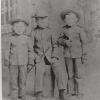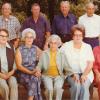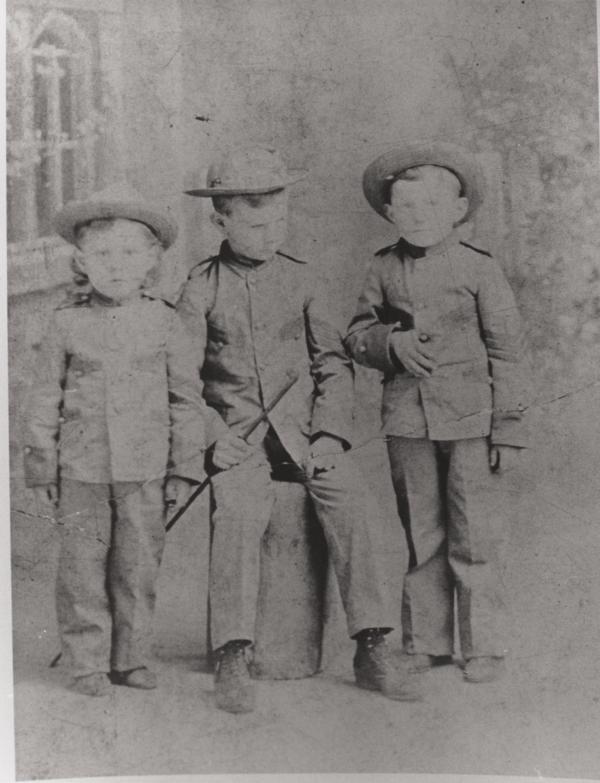Capturing Change
| Grade | Kindergarten | Class | Social Studies | Length of Lesson | 40 Minutes |
| Lesson Title | Capturing Change |
| Unit Title | Identity |
| Unit Compelling Question | How is everyone unique? |
| Historical Context: We often hear stories from older generations about what their childhood was like. They might tell us about the clothes they wore, the games they played, and the food they ate. As younger generations hear stories they often laugh or simply smirk at the fact that it is much different than their own childhood. Each student has their own unique personality, but the environment and world around them highly affects them. Schools that were once one room school houses are now seen to be multiple story high buildings. Kids were required to wear a certain outfit to attend school, and now they just simply have to follow a dress code. School lunches and snacks were mich different than what kids are experiencing. What kids did for fun and for hobbies are now very different. Time has changed in America, and has new generations have come up things are starting to evolve and enhance. ~ Allyson Simpson, Simpson College 2018.022.001 This photograph shows Frank Adler and two of his brothers, Ed and Walt, dressed in United States military uniform outfits. Frank Adler, who later used the stage name Felix Adler, was born in Clinton, Iowa on June 17, 1895. At the age of 15, Adler began working as a comedian around the Clinton area. Sometime around 1914, Adler joined Ringling Bros. and Barnum & Bailey circus. Shortly after, however, Adler left the circus and served in the Army during World War I. In 1919, Adler returned to the circus and became "Funny Felix the Clown." During his career, Adler appeared in movies and TV shows including The Greatest Show on Earth (1952), The Jackie Gleason Show, Person to Person, Howdy Doody Show, Super Circus and Martin Kane Private Eye. He was the first American clown on television. Adler also earned the nickname, "The Whitehouse Clown" for the many times he performed for United States presidents, including Warren Harding, Calvin Coolidge, and Franklin D. Roosevelt. In 1948. Adler married Amelia Irwin, who also was a circus clown. The duo became the first husband and wife circus clown team. The pair retired from the circus in 1959. Frank "Felix" Adler passed away on February 1, 1960 and was buried in Clinton, Iowa. To celebrate his life, the town of Clinton celebrates Felix Adler Day each June. The first circus created in 1793 did not include clowns in its acts. However, with a need for a comedic part of the show, clowns soon became part of travelling shows, entertaining the audience with jokes, skits and performing scenarios that defied social norms. In the late 1800s, during a period of focus on child innocence and youth, clowns' identity became more focused on entertaining children. In addition to circus acts, books, magazines and other forms of publicity shared the carefree, clumsy character of clowns to a youth-centered audience. In the 1940s onward, children's television shows that featured clowns continued the cliche that had formed in the previous decades. Personas such as Clarabelle the Clown and Ronald McDonald were created to promote and advertise products towards children, and those who performed as clowns reached national popularity. It was not until the 1980s when clowns began to transform into the stereotype of the "scary clown", an idea that emerged with popular media such as the bestseller "It" by author Stephen King and horror movies based on clowns. 2018.009.024 This photo shows the five Wilson brothers, who each served in World War II, with the rest of their family. This photo, which was taken in November, 1941, was the last picture taken of the entire family before the brothers went to war. The color photograph shows Leora Wilson with her surviving children and their spouses taken in 1976. |
|
| Lesson Supporting Question | |
| Lesson Overview | Students will bring in and look at photo of families and see what their photo is saying about their lives (age, clothing, background, etc.). We will compare their photos to photos of children long ago. We will reflect on how our stories are different than students long ago and why our stories are so different or the same. |
| Primary Sources Used |
|
| Resources Needed | |
| Standard | |
| Lesson Target | The Kindergarten students will be able to compare and contrast the differences between the photos that they bring to class to photos of children long ago. This will be measured by teacher observation and response to teacher scaffolding and questions. |
| Lesson Themes | |
|
| Formative Assessment (How will you use the formative assessments to monitor and inform instruction?) |
I am assessing the students by taking anecdotal notes of students responses to a set of questions that I will be asking after looking at the two pictures and looking at their own documents. |
| Summative Assessment (How does the lesson connect to planned summative assessment(s)?) |
This lesson is a build up to a summative assessment. At such a young age, I wanted to only focus on one large standard and break it down for them in a fun an exciting way. This lesson focuses on comparing life in the past to life today which is only one of the 19 standard’s that Kindergarten has which is why it is a helpful tool to build up to the “midterm”. |
| Author | Kara Campfield | Created | Last Edited | ||||
| Reviewer: Dr. Chad Timm, Simpson College | |||||||
| Lesson Plan Development Notes: Social Studies Methods, Simpson College, Spring 2019 | |||||||





